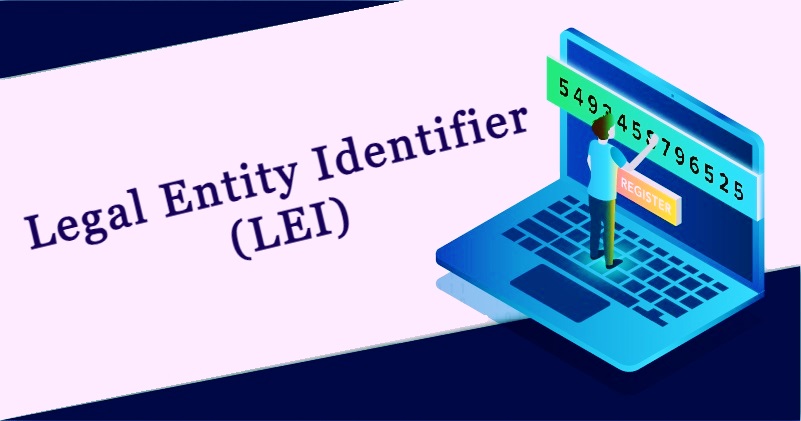Legal Entity Identifiers serve as vital components within the intricate framework of the global financial system. They are akin to unique identification codes assigned to legal entities partaking in financial transactions, akin to a digital fingerprint for businesses. LEI cover many legal entities, including corporations, partnerships, government organizations, etc. Just as names distinguish individuals, they set these entities apart, providing a standardized means of identification crucial for myriad financial processes.
The Birth of LEIs
The genesis can be traced back to a pivotal moment in the financial world – the 2008 global financial crisis. This tumultuous period underscored the need for heightened transparency and accountability within financial markets. It became evident that the absence of standardized identifiers for entities involved in financial transactions could lead to many problems. These included confusion, fraud, and operational inefficiencies. To combat these issues, they were introduced as a systematic solution to bring order to the chaotic landscape of financial transactions.
The Anatomy
To comprehend the significance, dissecting their anatomy is crucial. It is comprised of a 20-character alphanumeric code. This code is meticulously structured, combining letters and numbers in a specific sequence. Think of it as a sophisticated barcode unique to each legal entity. This code is a globally recognized means of identifying legal entities across national borders. It is a universal passport for businesses, facilitating their involvement in international financial activities quickly and precisely.
Why Businesses Love LEIs
Legal Entity Identifiers have garnered profound favor among businesses worldwide for several compelling reasons, each contributing to their increasing prominence:
Streamlining Transactions – At its core, they are powerful tools for simplifying and expediting cross-border transactions. They ensure that all parties involved can accurately and unequivocally identify each other by providing a standardized identifier. This eliminates the ambiguity that often plagues international financial dealings, akin to having a secret handshake that unlocks the doors to global markets.
Enhanced Risk Management – Businesses view it as an invaluable instrument for managing risk. These identifiers empower businesses to assess the risk associated with their counterparties precisely. Access to standardized information about other entities enables more informed decisions, reducing the likelihood of financial missteps.
Regulatory Compliance – In finance, compliance is the cornerstone of trust. They often assume the role of regulatory prerequisites, ensuring that businesses adhere to the rules and regulations governing their operations. Think of them as diligent referees, ensuring that every player in the financial game follows the established playbook.
Reduced Errors – In the preceding era, manual entry of counterparty details was susceptible to human error. They mitigate this risk by providing a foolproof means of identification, thus diminishing the chances of costly mistakes. This, in turn, ensures the seamless execution of financial transactions.
How LEIs Benefit Consumers
The advantages extend beyond businesses and permeate into the lives of consumers, delivering tangible benefits:
Lower Costs – Enhanced efficiency within businesses, facilitated by it, often translates into cost savings for consumers. Reduced errors and streamlined operations can lead to more competitive pricing, a welcome relief for consumers seeking value for their money.
Safer Transactions – They contribute significantly to fostering a more transparent and secure financial ecosystem. The assurance of accurate identification enhances consumer confidence when engaging in various economic activities, ranging from investments to banking.
Economic Stability – Beyond individual transactions, they ensure overall financial stability. By lowering the risk of financial crises and enforcing regulatory compliance, They contribute to a resilient financial system. This, in turn, has a direct impact on the economic well-being of individuals.
The Global Reach
One of the defining characteristics is their global reach. These identifiers transcend geographical boundaries and are recognized on a global scale. Regulatory bodies and organizations worldwide, including the Global Legal Entity Identifier Foundation (GLEIF), oversee the issuance and maintenance of these numbers. This concerted global effort ensures uniformity and universal acceptance, irrespective of a business’s location or international operations.
Conclusion
In the labyrinthine landscape of finance and commerce, Legal Entity Identifiers, or LEIs, stand as pillars of stability and clarity. They streamline transactions, bolster risk management, and enforce regulatory compliance, benefiting businesses and consumers. They have ascended to the status of a global standard, fostering transparency and grit within the intricate tapestry of the financial world.
The next time you encounter them, consider them not mere alphanumeric codes but keys to a more secure and efficient financial future. They empower businesses and consumers to navigate the complex economic terrain with confidence, precision, and peace of mind.








